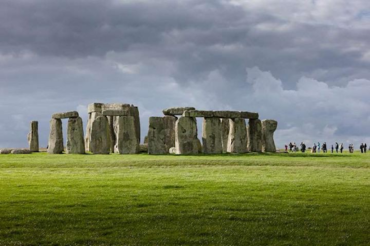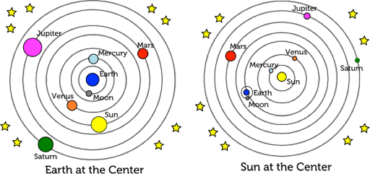We often need clarification on the two homonyms called Astrology and Astronomy. Are they the same? Well, the answer is both YES and NO. Like any other branch of science, we get information about ‘history’ through ancient drawings and sculptures. In 1600 B.C., the Babylonians discovered that five objects in the night sky do not move like other numerous light sources. Years later, those objects were coined as planets that are Mercury, Venus, Mars, Jupiter, and Saturn, which are visible to the naked eye.
They encrypted the Sun, stars, including the Pleiades star cluster, and a crescent moon on a bronze plate as shown beside. Thus, astronomy became the first known science to be observed and recorded. The Babylonians also made a chart of planets and the timings of the eclipse.
A thousand years later, the greek obtained the encryption and the drawing and improved their knowledge of Astronomy. One significant understanding by the early Greeks is that the Earth is a sphere since the shadow in the eclipse appears to be a circle. Plato, Socrates, and Aristotle are among the Greek astronomers who calculated the distance between Earth, Sun, Moon, and many more astronomical objects. In the second century BCE, the famous Greek astronomer Hipparchus compiled the first stellar catalogue. The astronomers after Hipparchus, like Ptolemy, and Copernicus, worked on the motion of the Earth and the Sun. Based on Aristotle’s physics of circular motion, the former concluded that the Earth is at the centre and the Sun is moving around it (Geocentric theory). The church accepted this as its own doctrine and followed it for years until the latter objected. Copernicus challenged the geocentric theory and developed a model to explain the Heliocentric theory, where the Earth moves around the Sun. With lots of objections and church protests, his theory was later accepted.

In the 1580s, astronomy evolved when Tycho Brahe, the first known observer, calculated the time period of the planets. He also showed that the Moon is much closer to Earth than the Sun. Later his student, Johannes Kepler, formulated the Laws of Planetary Motion which we use even today.

While the great Greek scholars were calculating and understanding the night sky, the commoners used the constellation and position of the Sun to find the time, direction, and Seasons. A prominent example is the sailors’ use of Polaris star and other constellations to navigate while sailing. They marked which constellation came at what time of the year and used it to find the seasons. The existence of compasses and sundials depicts that they used them in day-to-day life. The famous monuments around the world stand true to the previous statement. The Stone Circle of Nabta Palya, Stonehenge Britain, etc., were built by our ancestors to mark the seasons. The Sun’s position throughout the year can be split into solstices and equinoxes, which were flagged using these archaeoastronomical structures.

Returning to the question we started this article with, astrology and astronomy were coupled in ancient times. The zodiac signs we use today were coined by Ptolemy, who fixed the signs by the Sun’s position. He also gave certain qualities or characters for each of the twelve signs. For example, Aries, the first of the zodiac signs, is masculine, fiery, courageous, proud, and authoritative.
When the Greeks were flourishing with astronomical facts, the Indian astronomers were nothing less. Astronomy and astrology were used as synonyms by Indians as the earliest known text, Vedanga Jyotisha, written in 1200 BC, had several important aspects of the time and seasons, including lunar months, solar months, and their adjustment by a lunar leap month of Adhimāsa. Aryabhata, Bhaskara I, and Dinakara were among the prominent Indian Astronomers, but unfortunately, their works have not been preserved. So to justify the earlier answer, astronomy and astrology were considered one in ancient times. But, as science has advanced from knowing the stars’ position to learning the star’s chemical composition, astronomy is now adopted as a separate branch of science.


